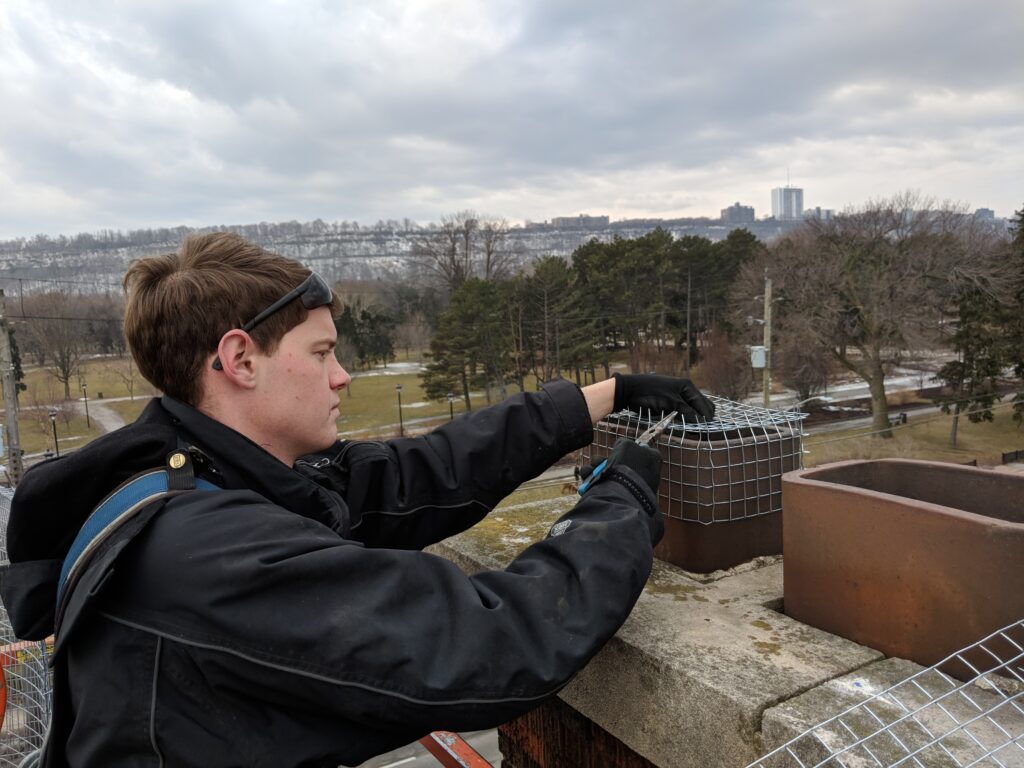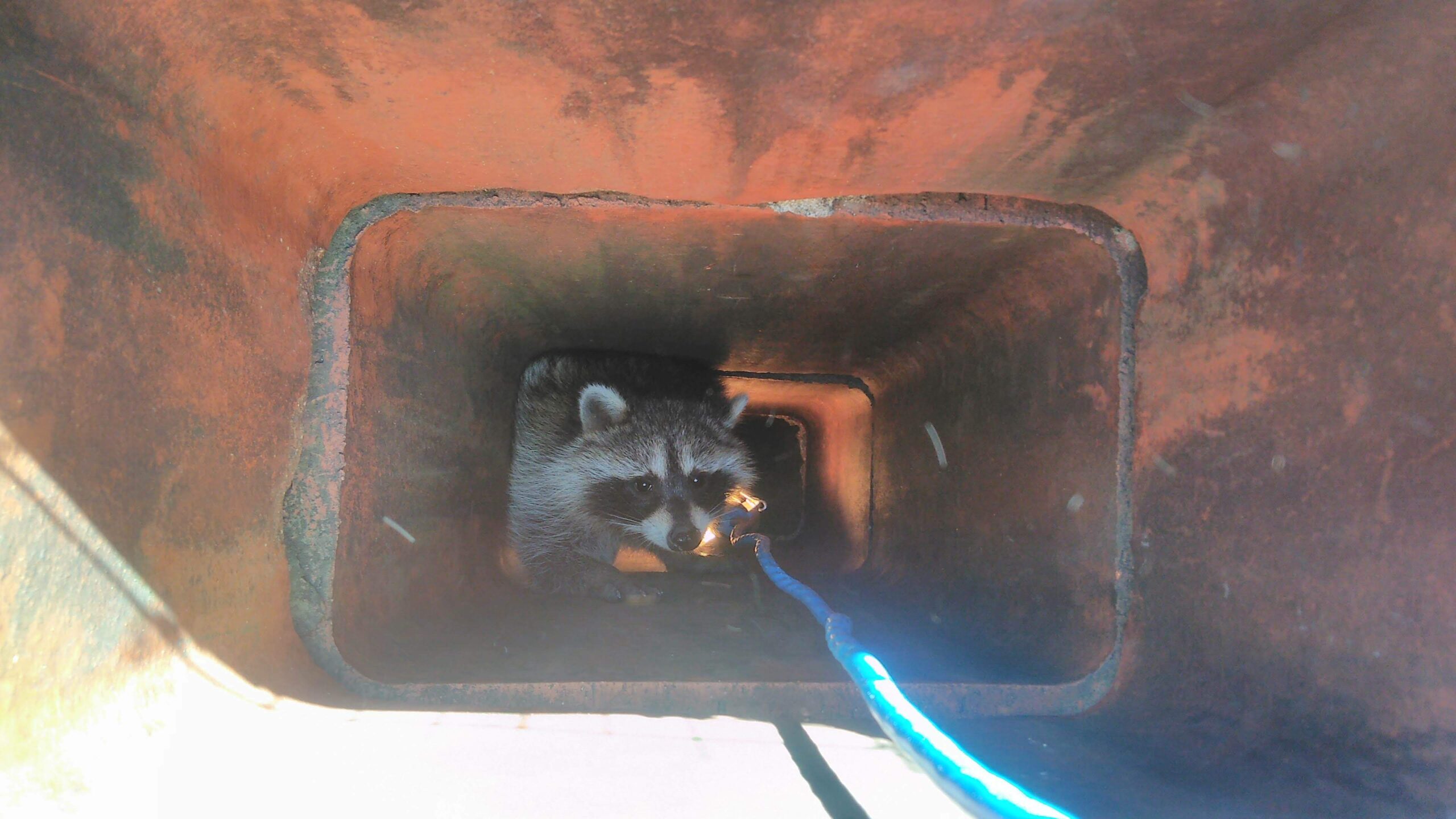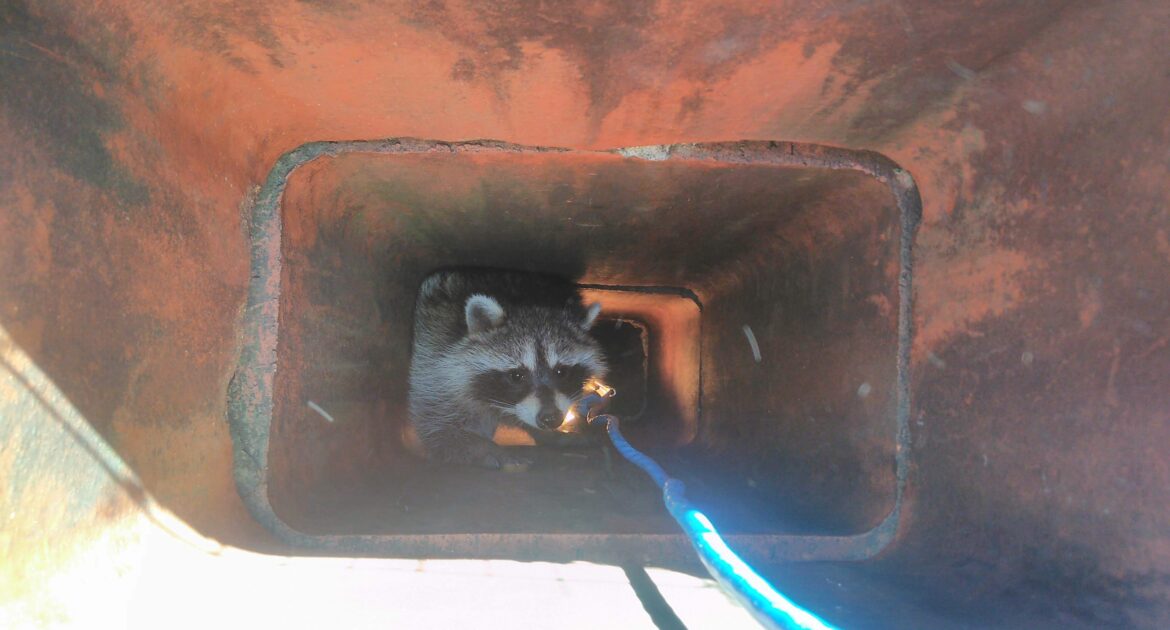Though Santa is famous for entering through the chimney, if you hear something moving around in your fireplace this winter, it’s probably a less-welcome guest. Uncapped chimneys, openings into attics, rotting roofs and loose shingles are all invitations to animals seeking a place to den. Unfortunately, once you get birds in the chimney, they can wreak havoc and even threaten your health. If you have a fireplace, here’s everything you need to know about wildlife entering chimneys.
How Can You Tell If You Have Birds in the Chimney?
If there’s a bird trapped in your smoke vent or building a nest there, you’ll notice the following:
- Droppings
- Flapping, rustling and scratching
- Chirping
- Bad smells
Of course, birds aren’t the only creatures that crawl into smokestacks. Skedaddle Humane Wildlife Control often gets calls around mid-January from homeowners hearing strange, fighting noises. This ruckus is often raccoons in your chimney — that “fighting” sound is actually mating. The mating season lasts through January and February, and raccoons are looking for a warm place to deliver and raise their spring babies.
Squirrels are also common intruders, as they, too, build nests before bearing young. They gather a variety of dry materials, such as grass and sticks, to do so, blocking the flue. Using your fireplace when you have a squirrel in the chimney can flood your home with smoke and potentially ignite the nest, causing a dangerous situation.
Like other wildlife, squirrels make a lot of noise:
- Scratching
- Scampering
- Gnawing
You may also find coffee bean-like droppings on the hearth. Of course, rats and mice have similar droppings, so it’s impossible to know which rodent has taken up residence without the assistance of wildlife removal experts.
Why Does Wildlife Enter Chimneys?
Birds may enter smokestacks looking for places to nest. Since chimneys are out of the elements, they may seem like the perfect spots to settle down. Occasionally, birds resting or nesting on top of the chimney wander inside, leaving themselves helpless and unable to fly back up. Birds that have mistakenly ended up in your fireplace or vent can be a stressful situation — not only for you but for the bird as well.
Raccoons may also venture into flues out of curiosity. Since they’re excellent climbers, they often use nearby trees, television towers or downspouts to access rooftops. Typically, raccoons nest in hollowed-out trees, and chimneys bear a striking resemblance, making them especially appealing to these critters. During winter, juveniles born the previous year will leave the maternal den and seek a new home — sometimes leading to raccoons in the chimney.
Squirrels also rely on trees for shelter, escaping predators and raising young. However, as humans continue to cut down trees, squirrels have adapted by utilizing anything that looks or acts like one. As a result, squirrels often make their way into attics and crawl spaces along the upper levels of houses. Squirrels give birth twice yearly, in the spring (January-April) and fall (July-August), prompting them to find a safe place to give birth during those times. A warm place with ample food (such as a house) is the perfect location.
What Should You Do If You Have Birds in the Chimney?
If you think you have animals in your home, you shouldn’t try to remove them yourself. These critters can carry infectious diseases and may become aggressive if they (or their young) feel threatened. It’s always better to call Skedaddle Humane Wildlife Control, as our trained technicians know how to handle animals without escalating the situation.
Additionally, you should never light the fireplace to drive wildlife out of the flue. Not only does doing so put you at risk, but it can seriously injure the frightened, trapped animal. Many birds and some mammals fall under the Endangered Species Act or local wildlife protection laws. If you knowingly harm a protected animal, you can face fines and even jail time.
Once you realize you have a wildlife problem, you may consider calling an extermination company but have the same problem with protected species. There’s also the issue of inhumane treatment. These animals don’t mean to cause problems — they’re just trying to survive and adapt in a human-dominated world. Wildlife removal is a more humane approach that solves the problem at the source, ensuring you don’t have the same issues later.

When you call Skedaddle Humane Wildlife Control, our experts clear out dens and nests, keeping you safe from the diseases that can flourish there. We also clean up raccoon latrines, which can be especially dangerous. In fact, animal feces can be so hazardous that you should never touch it, as doing so can cause you or your pets to fall ill. Our team has the necessary personal protective equipment and training to completely sanitize the area.
Once we remove the wildlife, we take steps to keep them out. For example, a properly screened chimney keeps birds, bats, squirrels, raccoons, and other animals out of your chimney and fireplace when the damper is open. We also evaluate your property for things that may attract critters or enable them to enter your home. For example, raccoons love unsecured trash bins, as they offer lots of easily attainable food. Branches overhanging your roof are also an issue since they can function as bridges for a variety of wildlife:
- Raccoons
- Mice
- Rats
- Squirrels
It’s important to note that you should never install a chimney cap until you are sure all animals have vacated the flue. Otherwise, you could accidentally kill innocent wildlife. If that happens, you’ll have to deal with the awful smells of burning hair and flesh, as well as a charred body. Residue and odour may linger until you get the chimney cleaned.
While animals in your chimney might not be what you asked for in the New Year, if handled professionally and quickly, you can have your house back to yourself and enjoy cozy winter days by the fire. Ignoring the issue only means more damage to your home, and no one wants to start the year paying for preventable repairs.
If you have birds in the chimney, contact Skedaddle Humane Wile Control today. You don’t even have to search “wildlife removal near me.” Just give us a call or visit us online to schedule your appointment.




